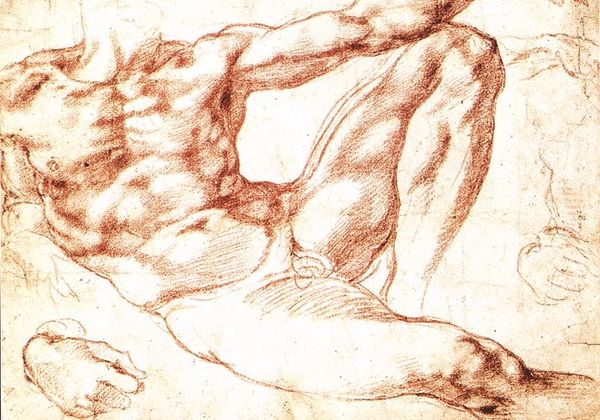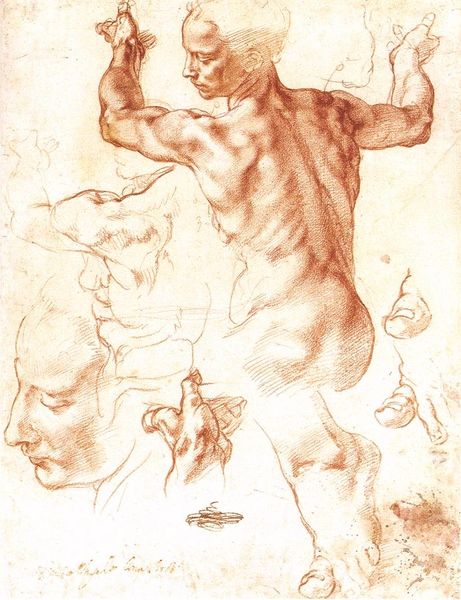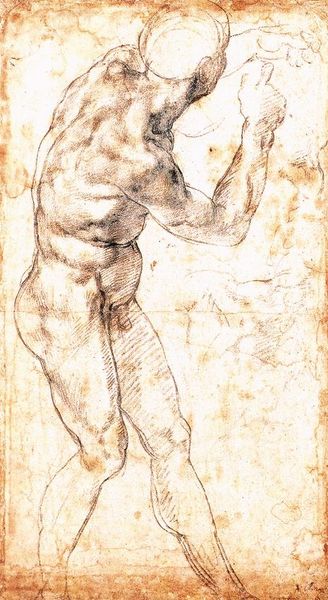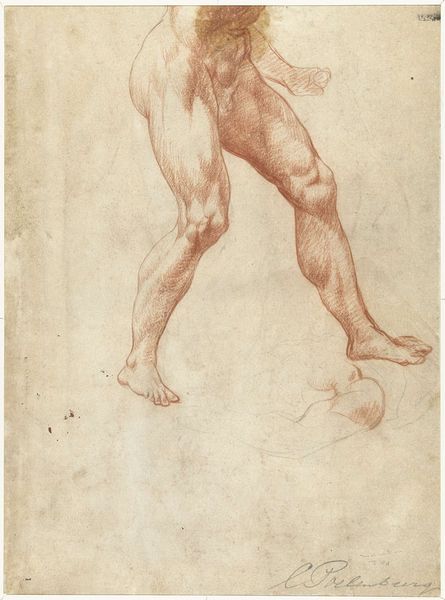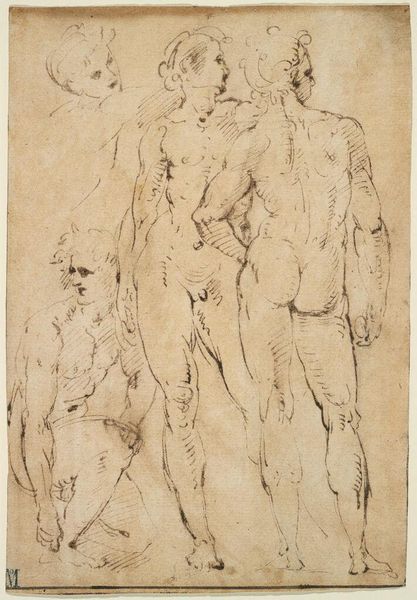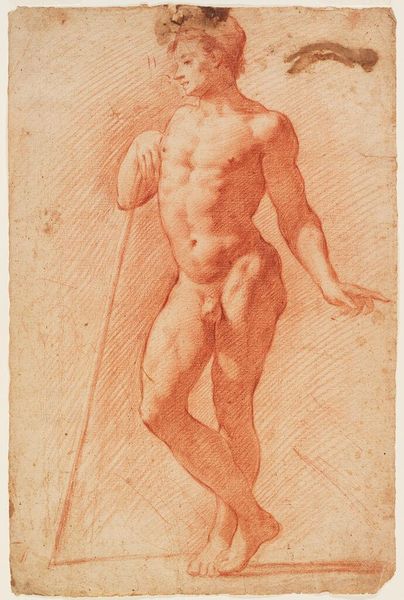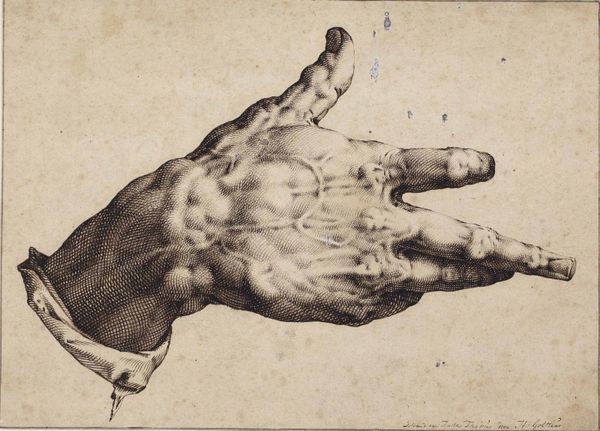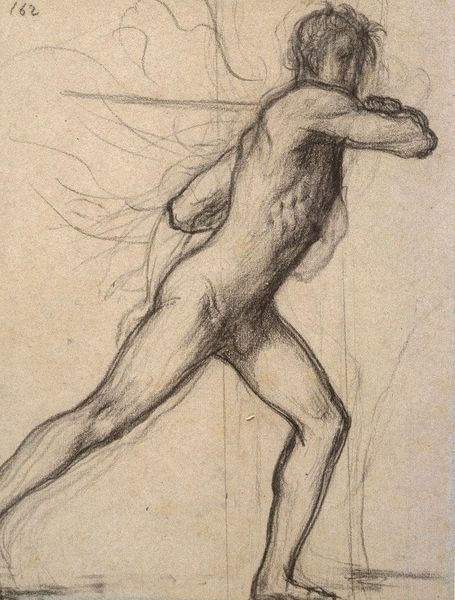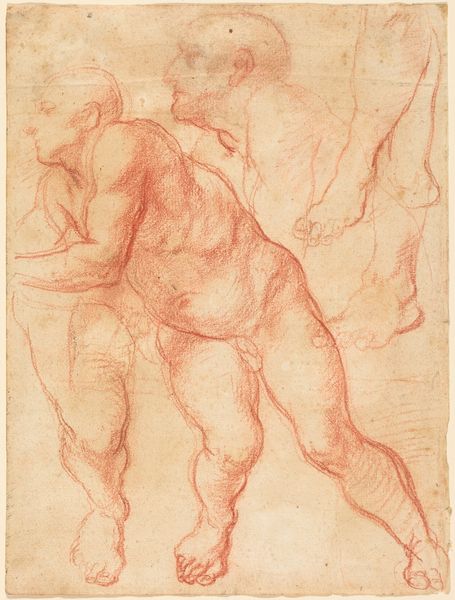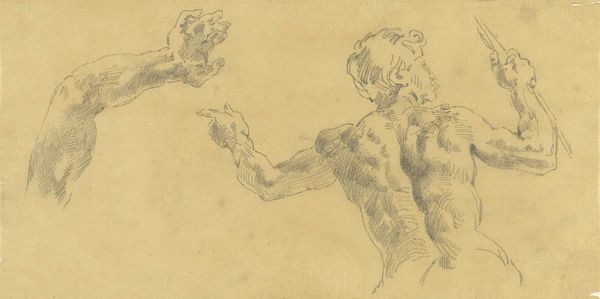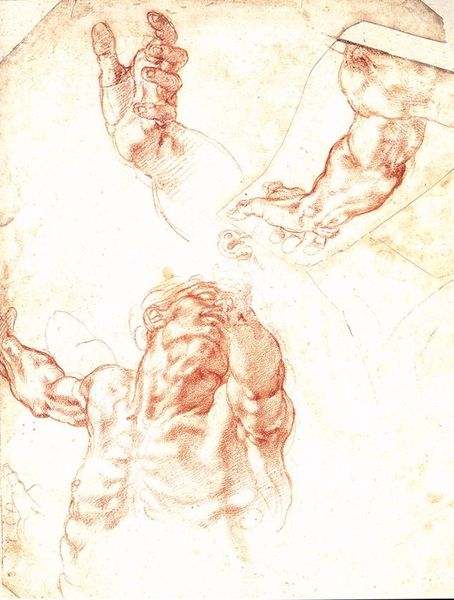
drawing, charcoal
#
drawing
#
charcoal drawing
#
figuration
#
form
#
11_renaissance
#
charcoal
#
italian-renaissance
#
male-nude
Copyright: Public domain
Editor: This is Michelangelo’s "Study for 'The Last Judgement'", a charcoal drawing from 1530. It's incredible how dynamic and powerful it feels, even in this fragmented state. The anatomical detail is striking, and the shading creates such depth. What can you tell me about how the composition contributes to the overall effect? Curator: Notice the intense focus on form, a cornerstone of Michelangelo's style. The truncated figures invite a scrutiny of line and shadow, directing the viewer to consider how the body’s contours are rendered. Consider the artist's strategic use of charcoal. Where do you see the darkest marks, and what effect do they create? Editor: They're concentrated around the muscles, which really makes them pop, giving them volume and highlighting the strain in their poses. The lightness around them enhances contrast. Is that strategic? Curator: Precisely. Through masterful modulation of tone, he guides our perception of mass and volume, emphasizing the ideal human form that so typifies High Renaissance art. He’s almost pre-occupied with anatomy, wouldn’t you say? The cross-hatching builds form effectively. Do you see any areas where the hatching is more pronounced and what is Michelangelo communicating there? Editor: Yes, I think around the upper arm and shoulder of the central figure, there's a denser concentration of lines which, thinking about it, emphasises the tension in the muscle. It really makes the figure look as though it's struggling. Curator: Exactly, and by focusing so intensely on these elements of form and draftsmanship, Michelangelo asks us to appreciate the pure, intellectual artistry separate from narrative or context. Editor: So it's about the skill of representing the body, not necessarily the story it’s telling? Curator: Exactly. This reductive lens allows us to see the work in its purest aesthetic terms. By isolating portions of figures in this way, the artwork focuses almost exclusively on his capability. Editor: I see it now. I was caught up in trying to imagine the bigger picture, but it's really about the skill of the execution, a technical display of the mastery of form. Thanks!
Comments
No comments
Be the first to comment and join the conversation on the ultimate creative platform.
